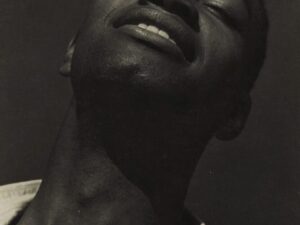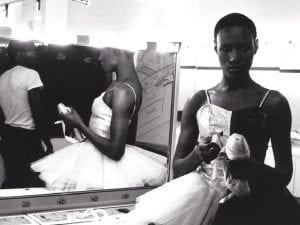Brooklyn Museum welcomes Cuban artist María Magdalena Campos-Pons (b. 1959) to New York this summer for her first solo show in the city. Born in the same year Fidel Castro (1926-2016) rose to power, she grew up during a time of experimentation and artistic freedom – finding her voice in this post-revolutionary environment. Over a career spanning four decades, she has been a part of major exhibitions around the world, including the Sharjah Biennial, Venice Biennale and Havana Biennial. The exhibition Behold collates a selection of her photography, installation, video, painting and performances. In this sweeping, multi-sensory survey, visitors will explore her engagement with communities across China, Cuba and the USA, navigating interconnected histories, identities and realities. Her work inspects a variety of themes, from motherhood and histories of enslavement to the might of nature and Santería traditions. The presentation features more than forty pieces, bringing together career-defining highlights.

In response to the harshening political climate in Cuba, Campos-Pons moved to the USA in 1991. She was unable to return home for many years. In turn, her art often visualises the difficulties of being in multiple places at once. She expresses the struggle of working and living in one location whilst being emotionally tethered to another, striving for connection across vast distances. A rarely seen photographic installation, Umbilical Cord (1991) presents a line of framed pictures of women from Campos Pons’ family. Only their stomachs, marked with white crosses, are visible in the frame. The artist’s abdomen is different, as painted footprints walk out from her navel. These photos alternate with ones showing outstretched arms as red string links each picture horizontally. Above the anonymous shots is a portrait of her grandmother “Maria” and below, anchoring the piece, is the word “Africa.” Created with her mother and sisters when she left Cuba, the installation tethers her family across the span of geographies and generations.

Campos-Pons’ family story is intertwined with difficult global histories of forced labour and subsequent advocacy movements for bodily autonomy. Behold traces her work back to the 19th century sugar industry, in which the artist’s West African Yoruba ancestors were enslaved. Moreover, Campos Pons shines a light on the experiences of her Chinese relatives. Between 1847 and 1874, around 125,000 male labourers from China worked as indentured servants on sugar plantations in Cuba. The Guangzhou Triennial 2008 provided Campos-Pons with an occasion to delve into this ancestry with My Mother Told Me I Was Chinese, The Painting Lesson (2008) becoming a part of The Guangzhou Museum’s permanent collection. In an interview with Sarah Lewis Cappellari for Theatre Journal, she explains: “[Guangzhou Museum] told me that they were aware of this relation to Cuba, but that no artist had addressed it in the way that this piece had. I found a path to my Chinese culture through an artistic language that talks about this so-called identity that is never named, that is not visible. We are many things at once. It’s important, because those conversations have political, social and economic implications.”

The complexity of identity is key to understanding Campos Pons’ oeuvre. The large-scale Polaroid series, When I Am Not Here/Estoy Allá (1994–1997), for example, exposes the falsehood and divisiveness of nationalist identity. Meanwhile, in the multipart collage, De Las Dos Aguas (Of the Two Waters) (2007), Campos Pons uses self-portraiture to evoke powerful Yoruba deities, Yemayá and Oshun, as divine protectors of migrants. Series on view for the first time in the USA include Sono Qui (2006), which links the Nigerian immigrant community in Italy today to the long presence of Black people in the country since the 1400s. Carmen Hermo, associate Curator for the Elizabeth A. Sackler Center for Feminist Art at Brooklyn Museum, states: “It’s a delight to showcase this survey of Campos-Pons’s art. Her work is conceptually rigorous, avant-garde, wondrous and beautiful. It embraces traditions and ways of being that preceded and survived the violences of colonialism, and it will appeal to viewers seeking decolonial narratives and inspiration from an artist who affirms that empathy and emotion are critical tools.”

Cross-cultural connection emerges as a common thread in Campos-Pons’ oeuvre. It’s a timely theme in our hyperconnected world, where social media echo chambers and populism seem to be driving us further apart. Behold counters the camera’s capacity to focus on certain facets of a subject’s identity. Instead, Campos-Pons presents people in all their depth and complexity. The exhibition’s title evokes associations of touch, support, and dignity, as the artist beholds, and upholds, communities around the world.
Brooklyn Museum, Behold | 15 September – 14 January
Words: Diana Bestwish Tetteh
Image Credits:
- María Magdalena Campos-Pons (born Matanzas, Cuba, 1959).The Calling, 2003. Diptych of Polaroid Polacolor Pro photographs, framed: approx. 24 ×44 in. (61 × 111.8 cm) overall.Collection ofJonathan and Barbara Lee. © María MagdalenaCampos-Pons. (Photo: courtesy of the artist).
- María Magdalena Campos-Pons (born Matanzas,Cuba, 1959). Red Composition(detail), from the series Los Caminos (The Path), 1997. Triptych ofPolaroid Polacolor Pro photographs, framed:approx. 37 × 29 in. (94 × 73.7 cm) each; approx. 37× 87 in. (94 × 221cm) overall.Collection of WendiNorris. © María Magdalena Campos-Pons. (Photo:courtesy of the artist).
- María Magdalena Campos-Pons (born Matanzas, Cuba, 1959).When I Am Not Here/Estoy Allá, Triptico I, 1996. Triptych of Polaroid Polacolor Pro photographs, 24 × 20 in. (61 × 50.8 cm) each.Norton Museum of Art, West Palm Beach, Florida;purchased through the R. H. Norton Trust, 99.92.1–3.© María Magdalena Campos-Pons. (Photo:courtesy of the artist).
- María Magdalena Campos-Pons (born Matanzas, Cuba, 1959).Freedom Trap, 2013. Polaroid Polacolor Pro photograph, 24 × 20 in. (61 × 50.8cm). Courtesy of the artist and Gallery WendiNorris, San Francisco. © María MagdalenaCampos-Pons. (Photo: courtesy of Gallery WendiNorris)
- María Magdalena Campos-Pons (born Matanzas, Cuba, 1959).The Calling, 2003. Diptych of Polaroid Polacolor Pro photographs, framed: approx. 24 ×44 in. (61 × 111.8 cm) overall.Collection ofJonathan and Barbara Lee. © María MagdalenaCampos-Pons. (Photo: courtesy of the artist).





